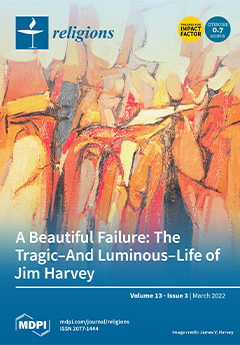This article highlights the positive relations between the Jewish and the Kurdish nations, maintained mainly by Kurdistani Jews until their displacement to Israel in the mid-20th century. These positive relations have been transmitted through their oral traditions, documented by both communities and travelers
[...] Read more.
This article highlights the positive relations between the Jewish and the Kurdish nations, maintained mainly by Kurdistani Jews until their displacement to Israel in the mid-20th century. These positive relations have been transmitted through their oral traditions, documented by both communities and travelers to Kurdistan, and validated by several scholars who studied the Jews of the region, Kurdistan, and Jewish-Kurdish relations. The dearth of historical documentation of both societies has resulted in a ‘negative myth’ used by the enemies of the Kurds and the Jews to dehumanize them before the 20th century, and therefore delegitimizing their right to statehood in modern times. From the 16th century onward, there is more solid evidence about the Kurdistani Jews and their relations with Kurdish neighbors. There are considerable and certain parallels between the two nations in terms of their oral traditions as well as linguistic and literary practices. The historical ties between the Jews and their neighbors in Kurdistan formed a fruitful ground for the relations between the Jewish people of Israel and the Kurds since 1948. Despite the exodus of almost the entire Kurdistani Jewish population to the State of Israel, Kurdistani Jews have largely retained their identity, culture, and traditions and have effectively influenced Israel’s policy towards the Kurds. The often-secret relations between the Kurdish movement in Iraq and Israel since 1960 played an important role in the global security policy of the Jewish nation in the Middle East, and in effect served to keep Baghdad from becoming involved in the Arab-Israeli conflict on one hand, and allowed the Kurdish liberation movement in Southern/Iraqi Kurdistan to survive on the other. These ties were reinforced by the sense of a common fate and struggle for statehood, persecution and genocides, feeling of solidarity, mutual strategic interests, humanitarian and economic dimensions, in post-1988 Halabja Massacre, the operation of the US led coalition against Iraq in 1991, and 2003 Invasion of Iraq. Since the Arab Spring, the military interventions against the self-proclaimed caliphate, Islamic State (IS), and the referendum for an independent Kurdish state in northern Iraq in 2017, this relationship allegedly has extended to include the relationships between Israel and the Kurds in Western/Syrian and Eastern/Iranian Kurdistan as well. Notably, Israel was the only state that publicly supported the creation of an independent Kurdish state. With all the development the Kurdish question has paved in the 21st century, the article concludes that the majority of the Kurds of the 21st century can be described as a ‘pariah people’ in Max Weber’s definition and meditation of the term and Hannah Arendt’s ‘rightless’, who ‘no longer belong to any community’, while describing the different aspects of the political, economic, and cultural calamity of Jews, refugees, and stateless people at the beginning of the 20th century.
Full article





